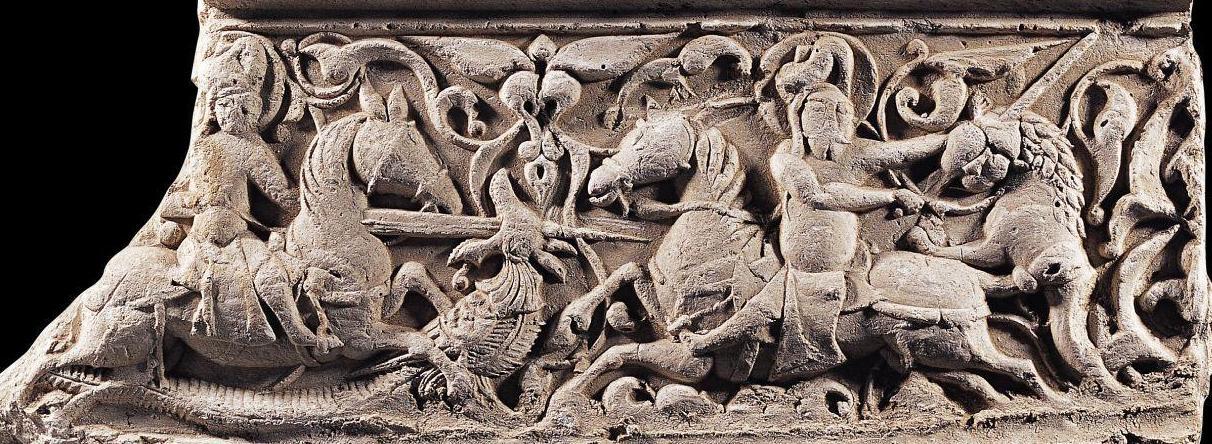
Try Amazon Fresh
Plaster Relief of Seljuq, Byzantine or Armenian Cavalry Fighting a Dragon & a Lion

Source: Museum With No Frontiers


Plaster relief
Hegira 7th-8th centuries / AD 13th-14th centuries, Anatolian Seljuq
Museum of Turkish and Islamic Arts, Sultanahmet, Turkey
Dimensions: Height 28 cm, width 53 cm, depth 4 cm
Museum Inventory Number: 2831
Material(s) / Technique(s): Moulded plaster/stucco
Provenance: Konya, Turkey
This plaster fragment from Konya Palace depicts a horseman fighting a lion and another horseman fighting a dragon. Costumes and accessories and the way the figures are rendered all reflect the features observed in depictions of horsemen and hunting scenes very common in Anatolian Seljuq-period art.
Referenced as figure 255 in The military technology of classical Islam by D Nicolle
255. Stucco relief of Qilij Arslān II, 1156-1188 AD, Saljūq Rūm, Museum of Turkish Art, Istanbul.
The basic round-headed dabbūs mace is quite common (Figs. 255, 268, 280 and 394 ), though clearly this type could also have iron teeth or even same sorts of blades added.10
10. Al Ṭarsūsī, loc. cit.
Referenced on p.28, Byzantine Infantryman, Eastern Roman Empire c.900-1024 by Timothy Dawson
This twelfth- to thirteenth-century relief of hunters is displayed in the Islamic Museum, Istanbul, but several features, primarily the straight, tapering swords, and long-stirrup riding style, make it plain that the men are not Turks. Rather, they are Romans, or else Armenians, perhaps from Kilikia.
Hunting has always been one of the most common ways which a man of the equestrian fraternity maintained his skills when not committed to the battlefield. Hunting lions with hand weapons had a special kudos in the literature and art of Romania, just as it did in al-Islamiyya.